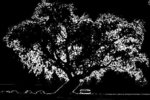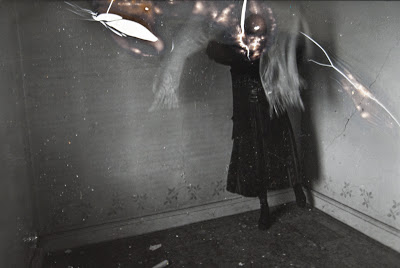(5 Day Intensive at Centre of Gravity, 180 Sudbury Street, Toronto, September 25-29, 2011. Talks by Michael Stone, notes by MH (with errancies, mishearings, conjectures. This is talk 1 of 5 on a Chinese poem (often chanted in Zen monasteries) called Sandokai written in the 1st century, strained through Suzuki’s commentary in Branching Streams Flow in the Darkness.)
Dogen
What would a Centre of Gravity retreat be without a few start up words from Dogen? Think of it as word gasoline. Starter fluid. Dogen writes, “…make each moment the top of your head. Don’t regard this as the beginning. Don’t regard it as going beyond. Even if you see it as the beginning, kick it away. Even if you see it as going beyond, stomp on it. Then you are not bound by beginning or going beyond.”
For many it’s more interesting to live in the fantasy of what is here, but perhaps we can ease the grip of the fantasy, stop getting hooked by it quite so much, and return to this moment, not for the first time, but again, not forever, but for now. Sometimes you can be so busy that you’re here in the room but you’re not here – still busy planning and ruminating. Meditation can be a subversive act because it invites us to stop, it is a move against the stream of busyness of our lives. Your head is this moment. Can you land on this moment? Can you let each moment land on the top of your head?
When Dogen writes “Don’t regard it as going beyond,” he might be referring to something “spiritual.” You know, like when you’re smoking a joint with friends and someone says, “This is like divine!” Which prompts you naturally to ask, “What do you like mean like exactly?” And then the philosophy class is back in session. Dogen insists that we don’t need to transcend this moment. If there is tiredness, let there be tiredness, be mindful of the tiredness, that’s what is showing up in the field. You don’t need to go beyond what is showing up in the field, just be there with it.
Or perhaps you’re someone with a melancholy bent and you’ve just run off three days of happiness. Uh oh, I better take out my Leonard Cohen CD and get real again. Maybe you’re trying to transcend happiness.
Sandokai
This chant/poem is not something to decode, we’re not here to strip away the layers of mystery. We’re not studying this text like a comparative literature class – there’s no exam at the end for instance. Except that the exam is the rest of your life. Try to take it in like you take in your breath.
Sekito Kisen (700-790) (in China he is called Shitou Xiqian, a name that appears in many koans. He lived a many-koaned life) was born in the 8th century in southern China. It was at this time that Mahayana Buddhism was starting to become Zen. It is 300 years after The Lotus Sutra (a central text for Chinese Buddhism), and The Avatamsaka Sutra aka The Flower Garland Sutra (collected texts gathered in the 3rd or 4th century). The poem arrives after the deeply insightful and divisive The Platform Sutra (8th century China).
Flower Garland Sutra
From The Avatamsaka Sutra it carries a couple of key ideas. First that everything is interdependent. You can’t pick up a speck of dust without picking up the world. When you keep your house clean you keep it clean for the entire neighbourhood. And when there’s trouble in one part of the web the whole web suffers. This really changed people’s ideas about enlightenment. Some had imagined it was a largely solitary practice. But if you suffer I feel your suffering. The more one practices the greater the capacity to feel another’s pain, and the more freedom you feel. This is the impossible dialectic – between freedom and the capacity to feel other’s pain. It’s not resolvable and this gives you the resolve to engage in your life.

Non-Obstruction
The second major idea that comes from The Flower Garland Sutra is that nothing obstructs anything else. There’s nothing in the way. Usually we think that my human nature is covering my Buddha nature. But if everything is interdependent this isn’t really possible. This understanding of non-obstruction was not prevalent in Theraveda Buddhism. But it was key to the Sendokai.
In these early days of Zen, it was a time of recognizing that practice was transmitted from mind to mind, face to face, intimately. Before that there was an idea of spiritual practice being reclusive, something for loners, outcasts and refuseniks. But in China there is a reworking of these ideas (possibly via Taoism) and that practice is cultivated face to face.
North and South
When Sekito wrote there were two major schools, one in the north dedicated to gradual enlightenment, and one in the south dedicated to sudden enlightenment. The southern or Soto school believed that you practice so you can have this break where you see your life in a completely different way. At the Centre of Gravity we practice both wide and deep, we adhere to both schools. Sometimes people go on retreats and have big awakening experiences that change their lives, but then they need to figure out how to put that to work, often they’ll need some kind of support to be able to integrate those insights into their lives. Too often this happens with teenagers, they’ll have some great awakening experience, but then the supports aren’t there, the sudden arrives, but the gradual is lost, they’ve experienced a deep interconnectedness, they’ve lived inside this oneness, but don’t know how to connect with it again, so it just becomes more ego food.
Most koans fall on the side of the gradual school or the sudden school. Some koans are trying to get you to fall out of the trap door of what you think is your life, while others are tryng to get you see brown rice in a different way. Like the koan that goes, “Have you washed your bowl?”

Stone lineage
Around 740-50 CE Sekito sat by the water on a huge flat stone. That’s how he got his name. Sekito literally means “stone head.” He sat like a stone, his practice was heavy and continuous. Can we be like breathing stones? Our lineage traces itself back to the Buddha and a rock. The word “guru” in Sanskrit literally means gravity, it means someone who is not moved by every passing negotiation.
Whenever you have fear it’s not uncommon to chant The Heart Sutra. Whenever you need to harmonize dichotomies, to bring together two sides, it’s not uncommon to chant the Sandokai. The poem is about how we create the north and south schools. Sometimes it’s necessary to do, but the way we make enemies keeps us from being fragile. This summer I was on retreat and I looked around the room at all the people who annoyed me. And in each instance I found that the quality that annoyed me was some slight exaggeration of a quality within me.
One moring the Roshi arrived with blinds and decided we should all be blindfolded and led around. I was blindfolded by a man from Bolivia who took me down to the low-ceilinged basement, and while I was there I thought about the man who kept falling asleep, the one who was also going blind I had just learned, and I had this thought: that he was going to be OK. If he loses his sight it will be OK. When you’re quiet for a few days you stop thinking about yourself all the time, the insight I had was about someone else.
There’s a Taoist text named Sandokai and Sekito bows to this text by giving it the same name. Taoism has a couple of principles that are important for the Sandokai: that everything is changing. And the non-separation of the a person and the natural world.
One for all
The title is often translated as the harmony of difference and equality. But if you say “harmony” it already implies there is a north and a south, a me and a you, self and other. It’s also translated as “the identity of the relative and the absolute.” San means difference, or three or many. Do is sameness, oneness, unity, dharma. Kai is shaking hands. Shaking hands of san and do. Difference and unity. It’s not that A and B are shaking hands, they ARE shaking hands. Thomas Cleary translates Sandokai as the merging of difference and sameness. Another internet source: “the oneness of the one and many.” Roshi said that when they had their translation party the one they liked was: “One for all, and all for one!”
In Buddhism the absolute is not a God or a place in the sky, it might be saying: no one is born, no one dies, nobody steals, because the level of interdependence is so deep. At that deepest level you don’t exist in the way you think you do. There is nobody there. There is nobody doing nothing. Some of us need to work on this side of interdependence, working with the merging, grokking the group, while others need to do more work on the singularity side, performing a little less service to others, having a little more self care. Another way of saying this, via Dogen, is “Cranes legs are long, duck legs are short.”
There is oneness and difference at the same time. So: how do you live this? There is a north and a south and they’re shaking hands and we need both of them.

Teacher
When Sekito was ten he was present when the 6th ancestor died. And when he was dying Sekito asked him (this is very telling of the kind of person he was), “Now that you’re dying, who should I study with?” The teacher said, “Go figure it out for yourself.” This is a theme that runs through the Sendokai. You have to figure it out for yourself. If you want to stop turning them into the north school you have to do your own work. If you have a friend who becomes your nemesis, you need to figure something out about yourself – the more we allow our enemies in the bigger we get, until at last we can swim in water that is really cold.
My son Arlyn was always puzzled by borders. Why did they put the border there? How can they put a border in the middle of the Great Lakes? How can this wave be American and that one Canadian? Perhaps in answer to these questions I should have said to him, “Go figure it out for yourself.”

Soft
The Sendokai is chanted all over the world,. It’s really soft. The gradual (Soto) school is soft. The way to practice is through the heart. This is the theme song for Soto Zen, though perhaps in the end it’s the harder path, maybe it’s easier to be on the hard path where you simply have to follow orders and adhere to the form.
First line: “The mind of the great sage of India is intimately transmitted from west to east.”
From west to east means from India to China. Usually when we think of spiritual practice being conveyed we think of a form of practice. But in this case it’s the Buddha’s awakening mind. It’s not awakened period, it’s not static, but something in motion conveyed from west to east. In Taoism a sage is a recluse but a bodhisattva is someone who practices by serving. Your awakening mind is conveyed through your service. How do we serve? Intimately. What’s being conveyed can only be conveyed through intimacy.
Let’s say there’s part of me that’s angry. I don’t like that part of me. I split it off, I banish it. That’s the north school. Then there’s the rest of my life, that’s the south school. How do I heal this split? I need these two parts to be intimate. How to turn the unacceptable into the acceptable?
Sekito’s Enlightenment
He couldn’t find the words to express himself, I guess it didn’t happen often. And then his teacher hit him, and he woke up. What was the question Freud asked? Is language the presenting symptom?
There’s a Buddha, a historical figure, a man and his words, a legacy, a momentum. How can we relate to the Buddha not as a thing over there, but as a central part of our lives?
Koan
A student once asked Shitou, “What is Buddhism?”
Shitou said, “You don’t have Buddha mind.”
The student said, “I’m human, I run around and I have ideas.”
Shitou said, “People who are active and run around have Buddha mind.”
“Why don’t I have Buddha mind?”
‘Because you’re not willing to stay human.”
The teacher hears in the question “What is Buddhism?,” some inference of striving, of wanting to be a Buddha. I want to transcend this, I don’t want to be human, I want to be above it all and not feel this pain, this anger, this jealousy, this heart break. Instead, I want to be a Buddha. I want to be something else. The punch line of all teaching is: You are exactly what you seek and you can’t see it because it’s you. You have to apprentice yourself to your enemy – to the north. If you’re not willing to be human, it means not wanting to yolk yourself to your own life.



